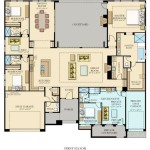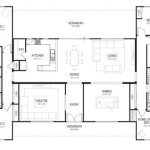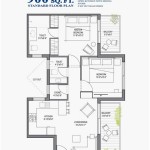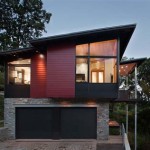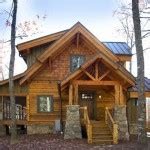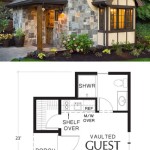A modern house floor plan is a blueprint that outlines the layout and design of a contemporary home. It provides a detailed depiction of the arrangement of rooms, spaces, and architectural elements, serving as a guide for construction and interior design. An example of a modern house floor plan might involve an open-concept living area that seamlessly connects the kitchen, dining room, and living room, maximizing natural light and creating a sense of flow and spaciousness.
Floor plans are essential tools for architects, builders, and homeowners alike. They ensure that the home’s design meets the needs and desires of its occupants while adhering to building codes and regulations. Through careful planning and consideration, modern house floor plans strive for functionality, efficiency, and aesthetics, reflecting the evolving lifestyles and preferences of homeowners in contemporary society.
In the following sections, we will delve deeper into the key features, benefits, and considerations of modern house floor plans. We will explore various layout options, design principles, and sustainable practices that shape the design of contemporary homes. By understanding the nuances of modern house floor plans, we can appreciate their role in creating living spaces that are both stylish and functional.
Modern house floor plans prioritize the following key points:
- Open and airy layouts
- Abundant natural light
- Functional and efficient spaces
- Sustainable design principles
- Smart home integration
- Indoor-outdoor connections
- Flexible and adaptable spaces
- Personalized and tailored design
- Emphasis on wellness and well-being
These elements combine to create modern house floor plans that are both stylish and livable, meeting the evolving needs and desires of homeowners in contemporary society.
Open and airy layouts
Open and airy layouts are a hallmark of modern house floor plans. They involve minimizing the use of walls and partitions to create a sense of spaciousness and flow. This is achieved by incorporating large windows and glass doors, allowing for ample natural light to flood the interior and blurring the boundaries between indoor and outdoor spaces.
Open layouts promote a sense of connectivity and togetherness, as different areas of the home, such as the kitchen, dining room, and living room, seamlessly blend into one another. This design approach fosters a more social and interactive living environment, encouraging family members and guests to interact and engage with each other.
Furthermore, open and airy layouts maximize natural light, reducing the need for artificial lighting during the day. This not only saves energy but also creates a more inviting and uplifting atmosphere within the home. By embracing open and airy layouts, modern house floor plans prioritize the well-being and comfort of the occupants, creating living spaces that are both stylish and functional.
To achieve a successful open and airy layout, architects and designers employ various techniques. These include the use of vaulted ceilings, skylights, and large expanses of glass. Additionally, careful consideration is given to the placement of furniture and decor to ensure that the flow of space is not obstructed and that each area remains functional and inviting.
Abundant natural light
Modern house floor plans prioritize abundant natural light to create bright, inviting, and energy-efficient living spaces. Natural light has numerous benefits for both the physical and mental well-being of occupants, and architects and designers incorporate various strategies to maximize its presence in the home.
- Reduced energy consumption
Natural light reduces the need for artificial lighting during the day, leading to significant energy savings. This is especially beneficial in areas with ample sunlight, where homes can rely primarily on natural light for illumination.
- Improved mood and well-being
Exposure to natural light has been linked to improved mood, reduced stress levels, and increased productivity. Natural light helps regulate the body’s circadian rhythm, which is responsible for sleep-wake cycles, hormone production, and overall well-being.
- Enhanced spatial perception
Natural light helps define spaces and create a sense of depth and dimension within the home. It illuminates architectural features, textures, and colors, making the space feel more inviting and visually appealing.
- Connection to the outdoors
Large windows and glass doors allow for a seamless connection between the indoors and outdoors, bringing the beauty of nature into the home. Natural light helps blur the boundaries between interior and exterior spaces, creating a more expansive and dynamic living environment.
To incorporate abundant natural light into modern house floor plans, architects and designers employ various techniques. These include:
- Orienting the home to maximize sunlight exposure
- Using large windows and glass doors
- Incorporating skylights and solar tubes
- Minimizing the use of walls and partitions
- Employing light-colored finishes and reflective surfaces
By embracing abundant natural light, modern house floor plans create homes that are not only stylish but also healthy and sustainable.
Functional and efficient spaces
Modern house floor plans prioritize functional and efficient spaces to maximize comfort, convenience, and livability. Every room and area in the home is carefully designed to serve a specific purpose and to flow seamlessly into the next. This thoughtful approach to space planning ensures that the home meets the needs and desires of its occupants while minimizing wasted space and maximizing functionality.
- Optimized storage solutions
Modern house floor plans incorporate ample and well-designed storage solutions to keep clutter at bay and maintain a sense of order throughout the home. Built-in shelves, drawers, and closets are strategically placed to provide ample storage space for belongings, ensuring that every item has a designated place. This not only enhances the functionality of the home but also contributes to its overall aesthetic appeal.
- Multi-purpose spaces
To maximize space utilization and versatility, modern house floor plans often incorporate multi-purpose spaces that can adapt to changing needs and activities. For example, a spare bedroom can be designed to double as a home office or guest room, while a dining room can be transformed into a playroom or entertainment area when needed. These flexible spaces allow for a more dynamic and adaptable living environment.
- Efficient traffic flow
Modern house floor plans are designed with efficient traffic flow in mind, ensuring that occupants can move around the home effortlessly and conveniently. Wide hallways, well-placed doorways, and open sight lines create a seamless and intuitive flow of movement. This thoughtful planning minimizes congestion and maximizes the functionality of the home, making it a pleasure to navigate.
- Smart home integration
Modern house floor plans often incorporate smart home technology to enhance convenience, efficiency, and security. Smart features such as automated lighting, temperature control, and security systems can be integrated into the home’s design, allowing occupants to control and monitor their living environment with ease. This integration of technology further enhances the functionality and livability of modern homes.
By prioritizing functional and efficient spaces, modern house floor plans create homes that are not only stylish but also comfortable, convenient, and adaptable to the evolving needs of their occupants.
Sustainable design principles
Modern house floor plans embrace sustainable design principles to minimize environmental impact and promote energy efficiency. By incorporating sustainable practices into the design, architects and homeowners can create homes that are not only stylish but also responsible and eco-friendly.
- Energy-efficient appliances and systems
Modern house floor plans prioritize the use of energy-efficient appliances and systems to reduce energy consumption and lower utility bills. This includes installing energy-efficient lighting, heating, cooling, and ventilation systems, as well as choosing appliances that meet high energy-efficiency standards. By incorporating these measures, homeowners can significantly reduce their carbon footprint and contribute to a more sustainable future.
- Renewable energy sources
To further reduce reliance on fossil fuels, modern house floor plans often incorporate renewable energy sources such as solar panels and geothermal systems. Solar panels harness the power of the sun to generate electricity, while geothermal systems utilize the earth’s natural heat to provide heating and cooling. By integrating these renewable energy sources, homeowners can minimize their dependence on non-renewable energy sources and create more sustainable and self-sufficient homes.
- Sustainable building materials
Modern house floor plans increasingly prioritize the use of sustainable building materials that have a lower environmental impact. These materials include recycled materials, renewable resources, and materials that are produced using sustainable practices. Sustainable building materials not only reduce the carbon footprint of the home but also contribute to healthier indoor air quality and a more sustainable built environment.
- Water conservation measures
Modern house floor plans incorporate water conservation measures to reduce water usage and minimize strain on local water resources. This includes installing low-flow fixtures, rainwater harvesting systems, and drought-tolerant landscaping. By implementing these measures, homeowners can conserve water, reduce their water bills, and contribute to a more sustainable community.
By embracing sustainable design principles, modern house floor plans create homes that are not only stylish but also environmentally responsible and resource-efficient. These sustainable practices contribute to a healthier living environment, a reduced carbon footprint, and a more sustainable future.
Smart home integration
Smart home integration is a key feature of modern house floor plans, allowing homeowners to control and monitor their living environment with ease and convenience. By incorporating smart technology into the home’s design, architects and homeowners can create a more comfortable, secure, and energy-efficient living space.
Smart home integration typically involves the installation of a central hub that connects various devices and systems within the home. This hub can be controlled through a smartphone app or voice assistant, enabling homeowners to manage lighting, temperature, security, and entertainment from anywhere, at any time. Smart home devices can also be programmed to work together to create automated routines and scenarios, such as turning on the lights when someone enters a room or adjusting the thermostat when the temperature drops below a certain threshold.
One of the key benefits of smart home integration is enhanced convenience. Homeowners can control their home’s systems and devices remotely, eliminating the need to physically interact with switches, thermostats, or security panels. This is especially useful for individuals with mobility issues or for those who simply want the convenience of controlling their home from their smartphone or tablet.
Smart home integration also contributes to increased security. Smart security systems can monitor the home for unauthorized entry, smoke, and carbon monoxide, and can send alerts to the homeowner’s smartphone in the event of an emergency. Smart locks can be controlled remotely, allowing homeowners to grant access to guests or service providers without having to be physically present. Additionally, smart security cameras can provide real-time monitoring of the home’s exterior and interior, enhancing peace of mind and deterring crime.
Overall, smart home integration offers a range of benefits for modern homeowners, including convenience, security, energy efficiency, and peace of mind. By incorporating smart technology into the home’s design, architects and homeowners can create living spaces that are not only stylish but also intelligent and responsive to their needs.
Indoor-outdoor connections
Modern house floor plans emphasize seamless indoor-outdoor connections to create a cohesive and expansive living environment. By blurring the boundaries between the interior and exterior spaces, architects and homeowners can bring the beauty of nature into the home while expanding the sense of space and enhancing the overall well-being of occupants.
- Expansive windows and glass doors
Large windows and glass doors are a key feature of modern house floor plans, providing unobstructed views of the outdoors and allowing natural light to flood the interior spaces. These expansive windows and doors create a strong connection between the indoors and outdoors, bringing the beauty of nature into the home and creating a more inviting and dynamic living environment.
- Outdoor living spaces
Modern house floor plans often incorporate outdoor living spaces such as patios, decks, and balconies. These outdoor areas extend the living space beyond the walls of the home, providing a seamless transition between indoor and outdoor activities. Outdoor living spaces can be used for dining, entertaining, or simply relaxing and enjoying the fresh air and .
- Indoor-outdoor flow
Careful attention is paid to the flow of space between indoor and outdoor areas in modern house floor plans. Architects design homes that allow for easy movement between the two spaces, creating a cohesive and expansive living environment. This flow can be achieved through the use of open floor plans, sliding doors, or large windows that open up the interior to the outdoors.
- Biophilic design
Biophilic design principles are incorporated into modern house floor plans to create a connection with nature and enhance the well-being of occupants. This can be achieved through the use of natural materials, such as wood and stone, as well as the incorporation of plants and water features into the home’s design. Biophilic design has been shown to reduce stress, improve mood, and enhance creativity.
By embracing indoor-outdoor connections, modern house floor plans create homes that are not only stylish but also healthy and connected to the natural world. These seamless transitions between indoor and outdoor spaces enhance the overall living experience, providing a sense of spaciousness, tranquility, and a deep connection to the surrounding environment.
Flexible and adaptable spaces
Modern house floor plans prioritize flexible and adaptable spaces that can transform to meet the evolving needs of homeowners. This adaptability is achieved through the use of movable walls, partitions, and furniture that can be easily reconfigured to create different layouts and room configurations. Flexible spaces allow homeowners to customize their living environment and create spaces that suit their current lifestyle and activities.
One of the key benefits of flexible spaces is the ability to accommodate changing family dynamics. As families grow and change, the need for space and the layout of the home may also change. Flexible floor plans allow homeowners to easily adapt their home to accommodate these changes without the need for major renovations or additions. For example, a spare bedroom can be transformed into a home office or a playroom as needed, and a formal dining room can be converted into a more casual family dining space.
Flexible spaces also support the evolving needs of individuals. As people’s interests and hobbies change, so too can their need for space. Flexible floor plans allow homeowners to create spaces that can adapt to these changing needs. For example, a hobby room can be easily converted into a fitness studio or a music room, and a guest room can be transformed into a home library or a meditation space.
In addition to accommodating changing needs, flexible spaces can also enhance the overall functionality and livability of the home. By allowing homeowners to customize their space, flexible floor plans create homes that are not only stylish but also highly functional and adaptable to the unique needs and preferences of the occupants.
Overall, flexible and adaptable spaces are a key feature of modern house floor plans, providing homeowners with the ability to customize their living environment and create spaces that meet their evolving needs. This adaptability not only enhances the functionality and livability of the home but also allows homeowners to express their individuality and create spaces that truly reflect their lifestyle and aspirations.
Personalized and tailored design
Modern house floor plans emphasize personalized and tailored design to create homes that are not only stylish but also uniquely suited to the needs, preferences, and aspirations of the occupants. This personalization is achieved through careful consideration of the following factors:
Individual lifestyles and needs:
Modern house floor plans are tailored to the specific lifestyles and needs of the homeowners. Architects work closely with clients to understand their daily routines, hobbies, and interests, and design spaces that support and enhance their way of life. This may involve creating dedicated spaces for hobbies, incorporating flexible and adaptable spaces that can transform to meet changing needs, or designing homes that are accessible and comfortable for individuals with specific requirements.
Personal style and aesthetics:
Modern house floor plans embrace the personal style and aesthetics of the homeowners. Architects collaborate with clients to create homes that reflect their unique tastes and preferences. This may involve incorporating specific design elements, such as vaulted ceilings, exposed beams, or large windows, or choosing finishes and materials that align with the homeowners’ desired aesthetic. By tailoring the design to the personal style of the occupants, modern house floor plans create homes that are not only beautiful but also deeply personal and meaningful.
Cultural influences and traditions:
Modern house floor plans can also incorporate cultural influences and traditions that are important to the homeowners. This may involve designing spaces that are inspired by specific architectural styles or that incorporate traditional elements and motifs. By embracing cultural influences, modern house floor plans create homes that are not only stylish but also deeply rooted in the heritage and values of the occupants.
Sustainability and environmental concerns:
Modern house floor plans often incorporate sustainable design principles and environmentally friendly features that align with the values and concerns of the homeowners. This may involve using sustainable building materials, incorporating energy-efficient systems, or designing homes that minimize their environmental impact. By prioritizing sustainability, modern house floor plans create homes that are not only beautiful but also responsible and respectful of the environment.
Overall, personalized and tailored design is a key aspect of modern house floor plans, resulting in homes that are not only stylish but also uniquely suited to the needs, preferences, and aspirations of the occupants. By embracing personalization, modern house floor plans create living spaces that are deeply personal, meaningful, and reflective of the unique character and values of the homeowners.
Emphasis on wellness and well-being
Modern house floor plans prioritize the health and well-being of occupants by incorporating design elements that promote physical, mental, and emotional well-being. This emphasis on wellness is achieved through careful consideration of the following factors:
Natural light and ventilation:
Modern house floor plans maximize natural light and ventilation to create healthy and uplifting living spaces. Large windows and glass doors allow for ample sunlight to flood the interior, reducing the need for artificial lighting and promoting natural sleep-wake cycles. Additionally, proper ventilation systems ensure a constant supply of fresh air, which is essential for maintaining good health and well-being.
Connection to nature:
Modern house floor plans often incorporate indoor-outdoor connections to bring the beauty and tranquility of nature into the home. Outdoor living spaces, such as patios, decks, and balconies, provide a seamless transition between indoor and outdoor areas, allowing occupants to enjoy fresh air, sunlight, and views of the natural surroundings. This connection to nature has been shown to reduce stress, improve mood, and enhance overall well-being.
Healthy materials and finishes:
Modern house floor plans prioritize the use of healthy materials and finishes that contribute to a healthier indoor environment. This includes using low-VOC (volatile organic compound) paints, finishes, and adhesives, as well as natural materials such as wood, stone, and bamboo. These materials are not only aesthetically pleasing but also contribute to better air quality and reduce the risk of allergies and other health issues.
Overall, the emphasis on wellness and well-being in modern house floor plans creates homes that are not only stylish but also healthy and supportive of the physical, mental, and emotional well-being of the occupants. By incorporating design elements that promote natural light, ventilation, connection to nature, and healthy materials, modern house floor plans create living spaces that contribute to a healthier and more fulfilling life.










Related Posts

